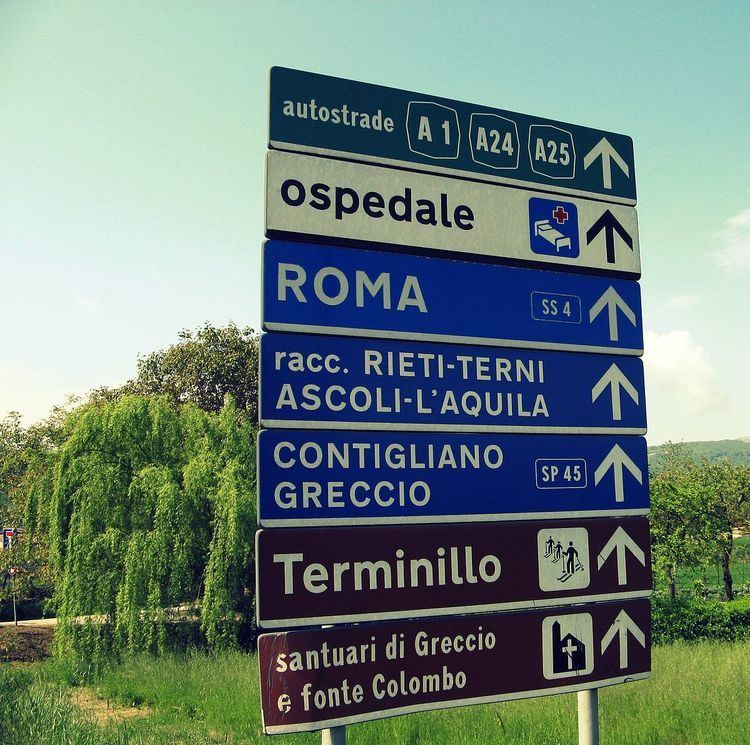 | ||
Road signs in Italy conform to the general pattern of those used in most other European countries. They are regulated by the Codice della Strada (Highway Code) and by the Regolamento di Attuazione del Codice della Strada in conformity with the Vienna Convention on Road Signs and Signals.
Contents
Design
Distances and other measurements are displayed in metric units.
Warning signs are usually placed 150 metres before the area they're referring to; if they're farther or nearer, an additional sign displays the actual distance in metres. Prohibition signs and mandatory instruction signs, instead, are placed exactly at the beginning of the area of validity.
Colours and shapes
Signs follow the general European conventions concerning the use of shape and colour to indicate function of signs:
Colours of directional road signs
On main roads and within cities, the colour of a directional sign with a single destination depends on the type of destination:
Typeface
A version of the Transport typeface employed on road signs in the UK, called Alfabeto Normale, is used on Italian road signs. A condensed version, called Alfabeto Stretto, is also used for long names that wouldn't fit. Each name uses one font, but names in Alfabeto Normale and in Alfabeto Stretto can co-exist on one sign.
The font is officially regulated by the 1992 Codice della Strada, article 39 section 125. It defines both Alfabeto Normale and Alfabeto Stretto for uppercase letters, lowercase letters and digits, "positive" (dark on light background) and "negative" (light on dark background). However, there are regulations about the use of Alfabeto Normale dating back to 1969.
Uppercase is used in most cases. Lowercase is sometimes used for city districts and tourist attractions.
Language
The standard language is Italian. In some autonomous regions or provinces bilingual signs are used (mainly Italian/German in South Tyrol, Italian/French in Aosta Valley and Italian/Slovenian along the Slovenian border, but also Italian/Friulan in the Friuli historical region and Italian/Sardinian in Sardinia).
